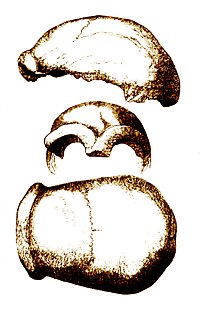
Photo from wikipedia
Objectives: Traumatic injuries are one of the severe health problems of our time. In the 21st Century, approximately 4.5 million people worldwide die each year due to trauma. Computed tomography… Click to show full abstract
Objectives: Traumatic injuries are one of the severe health problems of our time. In the 21st Century, approximately 4.5 million people worldwide die each year due to trauma. Computed tomography (CT) is widely used to diagnose injuries and offers information on the specific location and extent of organ and tissue damage. In cases of severe trauma, whole-body CT is increasingly used as a standard diagnostic technique. An autopsy is the final diagnostic examination and is still considered the gold standard in diagnostic methods in medicine. The aim of the study was to assess the reliability and accuracy of CT scan results, as well as limits in detecting trauma for forensic purposes. It aims to compare traumatic findings in the antemortem CT results to those observed at autopsy. Materials and Methods: We conducted a retrospective–prospective study involving 510 deaths due to trauma. We compared selected traumatic changes in the antemortem CT scan results with the autopsy findings. We obtained data with a detailed analysis of autopsy protocols, photographic documentation from the autopsies, and the interpretation of CT scans from medical documentation. In cases of discrepancies in the findings, we borrowed CT scans, which were repeatedly reviewed by clinical radiologists. Results: By comparing the findings of selected injuries detected by antemortem CT and autopsy, we found a correlation of findings in 75.3% and a discrepancy of findings in 24.7% in a set of 510 cases. After repeated targeted assessment of CT images by clinical radiologists in cases of discrepancies in the findings, which were detected by autopsy and undescribed by CT, the discrepancy decreased to 17%. Conclusions: The results of the study are comparable with data from many studies and professional publications. They show that CT compared to autopsy is a good method for diagnosing gunshot wounds to the head and bone fractures, with a limited diagnosis of cranial base fractures, while an autopsy is better for detecting minor injuries to organs and soft tissues.
Journal Title: Healthcare
Year Published: 2022
Link to full text (if available)
Share on Social Media: Sign Up to like & get
recommendations!